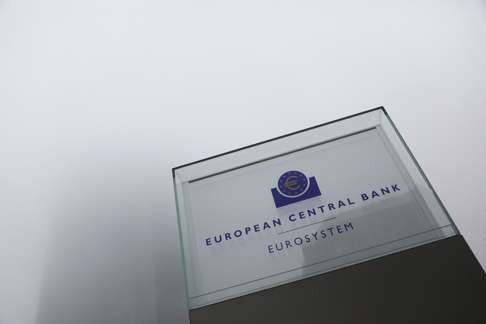
Italy’s rescue of Monte Paschi has an important lesson for China
‘Regulatory clarity, transparency and agreement over what constitutes bad debt is a critical and controversial first step in defining the scope of the problem’

Predicting the form and substance of mainland Chinese bank failures has become a cottage conspiracy industry among research analysts and hedge funds.
A more enlightening exercise is observing how other current government authorities and bank leadership have succeeded or failed, or have been swamped by indecisiveness and serial mediocre decisions in the face of default.
The recent December rescue and recapitalization actions by the European Central Bank for Bank Monte dei Paschi di Siena (MPS), Italy’s third largest bank, make an insightful, frightening and ongoing narrative.
Mainland China’s regulators will face the same regulatory and bank management pitfalls if and when they must resolve, restructure and rescue banks overcome by non-performing loans (NPLs).
Whether central bank actions are misinterpreted as calculated lurching, startling utterances or tactical retreats to a pre-conceived position all interact in a complicated political and public relations game. Regulatory clarity, transparency and agreement over what constitutes bad debt, specifically what is the definition of debt that is non-performing, or in default, is a critical and controversial first step in defining the scope of the problem.
At least 35 per cent of MPS’ loan portfolio is non-performing. The Italian government has assembled 20 billion euros for a bank bailout fund.
However, analysts doubt that it will be sufficient. More importantly, the bailout contradicts the ECB’s mandatory bail-in policies, which they enforced on Greece, Cyprus and Spain.
By declaring the bank as being an ongoing, liquid concern, rather than being in default, the Italians and ECB circumvented a key standard, but threatens to sow disunity in the EU.
Goldman Sachs estimates that a successful recapitalization will require 38 billion euros - just for MPS. Determining the amount needed for a successful recapitalization is probably the most risky exercise in a bailout. It requires a volatile weave of regulations, bank management and market perception. Controlling the flow and substance of information is crucial to exercising determination over the value of bad, toxic and hard to value securities.
The Italian government’s decision to intervene provides what amounts to a blanket liquidity guarantee for the rest of the banking system
By January, the ECB unexpectedly told Italian officials that MPS would require 8.8 billion euros in new capital. That figure was significantly higher than the 5 billion-euro target that the Italian bank had been seeking in recent months in the wake of Europe-wide stress tests in July.
Shortly following the announcement, the Italian government announced they planned to inject only 6.5 billion euros into the bank.
For regulators to openly disclose and disagree on bailout procedures and amounts is potentially dangerous and irresponsible.
It implicitly signals that the EU bank regulation system is seriously flawed. The ECB risks lawsuits by the public shareholders of MPS by haphazardly dropping arguments and data into the public domain.
The public and depositors will also consider the central bankers’ incompetence when new estimates arrived just two years after they said 2.3 billion euros would be sufficient, and one and half years after the€2.3 billion euros were raised.
The ECB’s bailout methodology has determined that Italy must throw more taxpayer money than planned into MPS.

Opaque decisions without an explanation lead people to think there’s something wrong behind the entire rescue.
Maybe the ECB is acting with incomplete information from Italian central bankers and MPS. Lack of management accountability, inaccurate financial and trade settlement data from banks was also key problem in resolving the 2008 US subprime crisis.
The inability to value complex derivatives, NPLs and collateral cripples the entire regulation process; it relegates the authorities to the mercy of senior bankers who are the only ones who can accurately value these securities.
Bailouts only legally and technically occur when banks are declared insolvent. The definition of a non-performing loan is underpinned by financial and legal debate. Any authority can indefinitely delay a market clearing event by shifting the goalposts.
The Italian government’s decision to intervene provides what amounts to a blanket liquidity guarantee for the rest of the banking system. It may be the only way to reassure financial markets.
The Italian financial sector will remain weak and suspect for years, but at least the markets can see that a total systemic meltdown in the sector has been avoided.
Ignoring the symptoms, misdiagnosing the malady, skipping the treatment is normative political behaviour.
If regulators and bankers were to become empiricists, they would examine the symptoms of the last crisis and formulate objective diagnoses and policy solutions.
But, the architects of financial reform and regulation are themselves the problem, not the solution.
Peter Guy is a financial writer and former international banker.